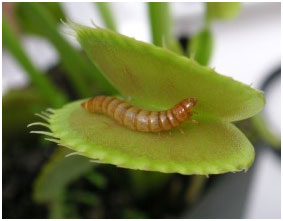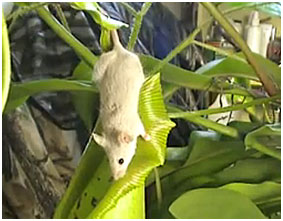Learn Science » Carnivorous Plants
Carnivorous Plants
Plants are the food that we eat. They sacrifice their lives for us. From small herbs to gigantic trees, various parts of plants and trees feed us. Even we eat the roots and seeds of plants.
We, human beings eat plants and meat. A few animals are herbivorous and a few are carnivorous. What do plants eat? You may know plants make their own food with water and sun. Yet, there is an exception.
However, for a change, as a revenge, plants eat meat!
Some Plants are carnivores. It doesn’t mean that plants kill animals and eat the meat. Rather, they eat the insects and bugs that pass their path. For instance, look at the picture below:

This is the wildest carnivore plant and is called Venus Fly Trap! Isn’t that a good name? It traps all those little worms and insects that pass by the plant.
This plant has two large and thick leaves and they appear like an animal with opened mouth. It has tiny hairs. Just as the little bug passes by or touches the hair of the leaves, the opened leaves shut the mouth. The insect is crushed and digested. When the mouth opens again you will find nothing there!
And the plant had its food! North Carolina is the native place where Venus Fly Traps grow!
Hope you remember a similar kind of plant but in a very huge size shown in the movie, ‘JOURNEY TO THE CENTER OF THE EARTH!’
Most of the carnivorous plants grow in the United States. They don’t have much nutrients as normal plants. These plants grow in muddy and wet area. There are a few plants that even consume rats.

Another example is the Pitcher Plant.
Pitcher plant attracts small animals with its sweet smelling nectar.
Carnivorous plants existed several thousand years ago and they adapted themselves, their nature to the environment. As the soil turned barren, they started to feed on meat. According to research, carnivores are the most sought after plants and many people are trying to get them grow in the home atmosphere.
Was this article useful? What should we do to improve your experience? Share your valued feedback and suggestions!
Help us to serve you better. Donate Now!

